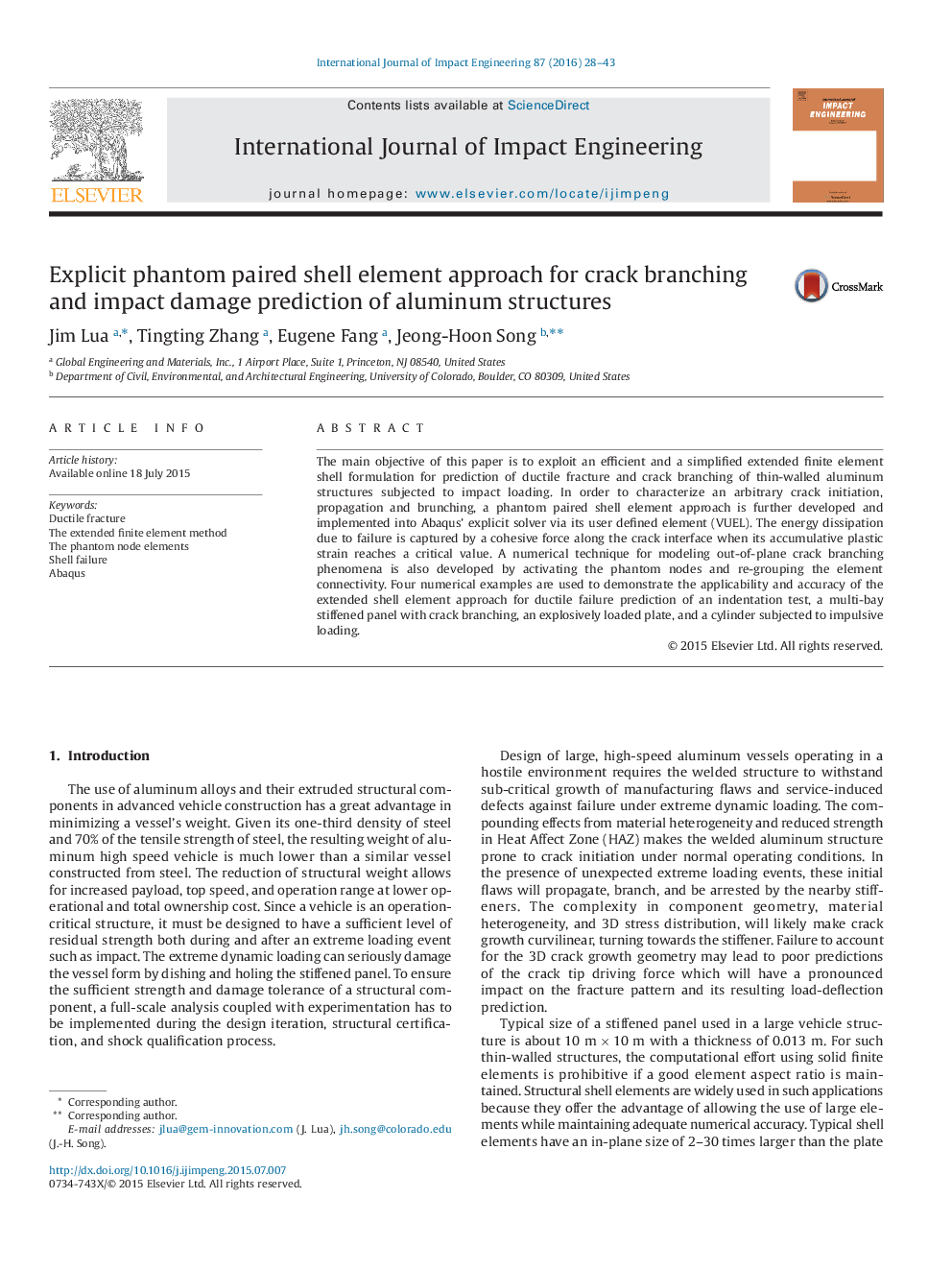| Article ID | Journal | Published Year | Pages | File Type |
|---|---|---|---|---|
| 779169 | International Journal of Impact Engineering | 2016 | 16 Pages |
The main objective of this paper is to exploit an efficient and a simplified extended finite element shell formulation for prediction of ductile fracture and crack branching of thin-walled aluminum structures subjected to impact loading. In order to characterize an arbitrary crack initiation, propagation and brunching, a phantom paired shell element approach is further developed and implemented into Abaqus' explicit solver via its user defined element (VUEL). The energy dissipation due to failure is captured by a cohesive force along the crack interface when its accumulative plastic strain reaches a critical value. A numerical technique for modeling out-of-plane crack branching phenomena is also developed by activating the phantom nodes and re-grouping the element connectivity. Four numerical examples are used to demonstrate the applicability and accuracy of the extended shell element approach for ductile failure prediction of an indentation test, a multi-bay stiffened panel with crack branching, an explosively loaded plate, and a cylinder subjected to impulsive loading.
